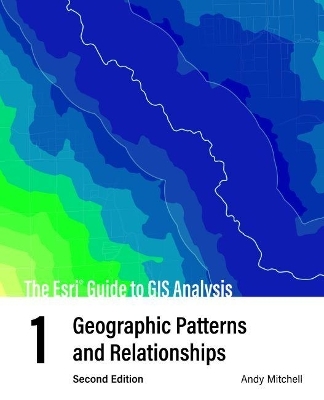
The Esri Guide to GIS Analysis, Volume 1
ESRI Press (Verlag)
978-1-58948-579-2 (ISBN)
Do more with your GIS and understand the foundation of spatial analysis: geographic patterns and relationships.
A geographic information system (GIS) enables so much more than mapping. A GIS inherently enables spatial analysis that can give you a better understanding of your geographic data. GIS analysis reveals answers to questions like:
Where is it?
Where's the most and least?
How much is where?
What's inside?
What's nearby?
What's changed
But how do you get started? The second edition of The Esri Guide to GIS Analysis, Volume 1 shows how and more.
With easier to read maps and text, The Esri Guide to GIS Analysis, Volume 1, second edition, dives beneath the surface of mapping, beyond displaying data to using it to reveal geographic insights. Learn the basic concepts of spatial analysis and GIS. Build on that understanding with essential map-building skills to unveil and display patterns and relationships. The Esri Guide to GIS Analysis, Volume 1, second edition, also includes a guide to online lessons that reinforce the concepts and demonstrate GIS application.
Written for both new and experienced GIS users using an easy to follow format, the second edition of The Esri Guide to GIS Analysis, Volume 1 helps you build a foundation of the basic tasks needed to handle a wide range of analysis applications and prepares you for more advanced GIS skills.
Andy Mitchell is a technical writer with more than 30 years’ experience in GIS. He is the author or co-author of several books, including The Esri Guide to GIS Analysis series and Zeroing In: Geographic Information Systems at Work in the Community.
Introducing GIS analysis
What is GIS analysis?
Understanding geographic features
Understanding geographic attributes
Mapping where things are
Why map where things are?
Deciding what to map
Preparing your data
Making your map
Analyzing geographic patterns
Mapping the most and least
Why map the most and least?
What do you need to map?
Understanding quantities
Creating classes
Making a map
Looking for patterns
Mapping density
Why map density?
Deciding what to map
Two ways of mapping density
Mapping density for defined areas
Creating a density surface
Finding what's inside
Why map what's inside?
Defining your analysis
Three ways of finding what's inside
Drawing areas and features
Selecting features inside an area
Overlaying areas and features
Finding what's nearby
Why map what's nearby?
Defining your analysis
Three ways of finding what's nearby
Using straight-line distance
Measuring distance or cost over a network
Calculating cost over a geographic surface
Mapping change
Why map change?
Defining your analysis
Three ways of mapping change
Creating a time series
Creating a tracking map
Measuring and mapping change
Where to get more information
Index
| Erscheinungsdatum | 10.05.2021 |
|---|---|
| Zusatzinfo | Illustrations, unspecified |
| Verlagsort | Redlands |
| Sprache | englisch |
| Maße | 190 x 234 mm |
| Themenwelt | Naturwissenschaften ► Geowissenschaften ► Geografie / Kartografie |
| Technik | |
| ISBN-10 | 1-58948-579-3 / 1589485793 |
| ISBN-13 | 978-1-58948-579-2 / 9781589485792 |
| Zustand | Neuware |
| Haben Sie eine Frage zum Produkt? |
aus dem Bereich


